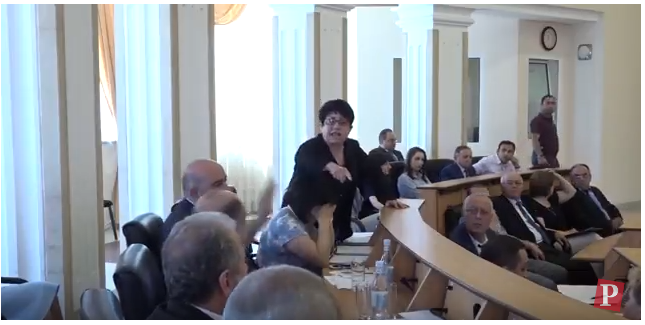On June 28, the incident that took place in the Artsakh parliament became a hot topic for discussion. An argument broke out between MP Zhanna Galstyan and Hayk Khanumyan (who was originally from Ijevan, Armenia) with curses and swearing.
In social networks, especially in Facebook, that incident once again provoked a debate regarding Armenia-Artsakh relations, with harsh judgements being made on both sides.
During the reciprocative offense, Zhanna Galstyan called Hayk Khanumyan a “gyalma” (meaning outsider in Turkish).
This phrase opened a frequently flaring, fading and re-emerging topic on Facebook regarding “Armenia-Artsakh.”
It seems that the discussions should have been left in the past long ago, the problems overcome, however, any extraordinary incident in Artsakh “wakes up” the topic and again, setting differences apart based on origins, in the context of local vs outsider, the right to be different (therefore being right and wrong).
A similar situation was created in Kashatagh (when Jirayr Sefilyan and his supporters were beaten by the people of Artsakh) and the incidents which took place with Asya Khachatryan (when the young girl was taken to the Artsakh Police station several times without any valid reasons).
Usually, problems arise when public discussion platforms become narrow and nearly disappear.
In Artsakh, the media is not free, coverage of events taking place, to put it mildly, do not reflect the reality.
Or rather, the media cannot predict that not covering certain topics can become explosive with time.
If in the past it was possible to hide some information by it not being covered by local media or by covering it up, today it is simply impossible.
If we try to put irrigation dams in the fields, there will always be situations of irrigation leaks, which present the reality. In that situation, the first who is placed under suspicion is the local media.
This was the case during the Parliament incident as well. Artsakh Public Television’s main news program and Artsakh Times covered the dispute of the MPs, and it was unclear as to who gave the first swear and what actually happened.
The ARF Artsakh central committee’s official webpage, aparaj.am superficially touched on the subject, however, as the users had noted, hence that website had published the video, which is now circulating on social networks where it clearly shows who started the argument. Right now, the video is no longer available on the website.
The video was published by a number of Armenian mass media outlets. In this background, the coverage of Artsakh media is not beneficial for overcoming existing problems between the societies of the two Armenian republics.
Moreover, media censorship and self-censorship leaves the impression that they try to hide everything in Artsakh.
Ultimately, overcoming problems and misunderstandings is only possible with an open and transparent working style.
The Chairman of the National Assembly of Artsakh, Ashot Ghulyan, stated at yesterday’s sitting that plenary sessions will be broadcast live starting from the autumn session.
In this situation there is a lot of work to be done in Artsakh’s media, which has the opportunity to become a mirror reflecting public concerns.
Anahit Danielyan







